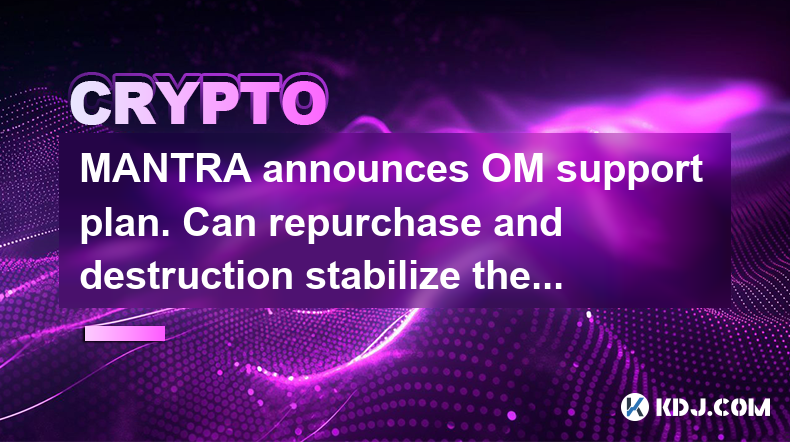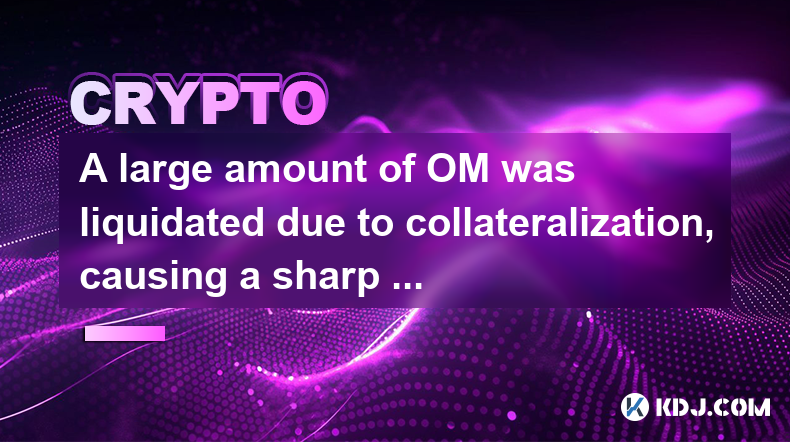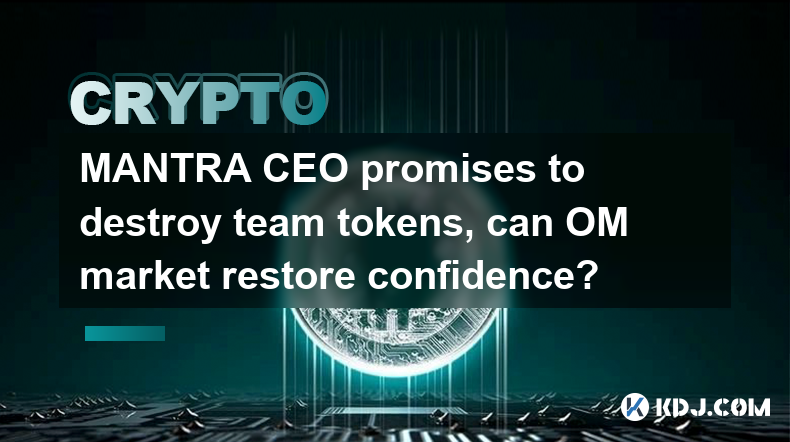-
 Bitcoin
Bitcoin $91,256.3033
3.39% -
 Ethereum
Ethereum $1,723.5244
5.98% -
 Tether USDt
Tether USDt $1.0006
0.10% -
 XRP
XRP $2.1808
2.69% -
 BNB
BNB $611.6352
1.26% -
 Solana
Solana $145.2440
4.71% -
 USDC
USDC $1.0001
0.07% -
 Dogecoin
Dogecoin $0.1726
6.92% -
 TRON
TRON $0.2472
1.71% -
 Cardano
Cardano $0.6638
3.44% -
 Chainlink
Chainlink $14.0337
4.16% -
 Avalanche
Avalanche $21.8740
6.44% -
 UNUS SED LEO
UNUS SED LEO $8.9676
-1.35% -
 Stellar
Stellar $0.2598
-0.15% -
 Sui
Sui $2.4368
8.47% -
 Shiba Inu
Shiba Inu $0.0...01309
4.18% -
 Hedera
Hedera $0.1782
3.94% -
 Toncoin
Toncoin $2.9908
-0.39% -
 Bitcoin Cash
Bitcoin Cash $361.0314
4.64% -
 Hyperliquid
Hyperliquid $18.8127
3.63% -
 Litecoin
Litecoin $82.7354
3.19% -
 Polkadot
Polkadot $3.9250
0.37% -
 Dai
Dai $1.0001
0.03% -
 Bitget Token
Bitget Token $4.5168
0.88% -
 Ethena USDe
Ethena USDe $0.9994
0.01% -
 Pi
Pi $0.6419
0.67% -
 Monero
Monero $219.7573
2.35% -
 Pepe
Pepe $0.0...08517
7.03% -
 Uniswap
Uniswap $5.6768
4.46% -
 Aptos
Aptos $5.1717
0.94%
How to avoid slippage losses in ETH trading?
Slippage in ETH trading can be minimized by using limit orders, trading during less volatile times, and splitting large orders into smaller chunks.
Apr 21, 2025 at 11:35 pm

Slippage is a common issue faced by traders in the cryptocurrency market, particularly when dealing with high-volume assets like Ethereum (ETH). Slippage occurs when there is a difference between the expected price of a trade and the actual price at which the trade is executed. This can lead to losses, especially in volatile markets. Understanding and implementing strategies to minimize slippage can significantly enhance your trading experience and protect your investments.
Understanding Slippage in ETH Trading
Before diving into strategies to avoid slippage, it's crucial to understand what causes it. Slippage is primarily caused by market volatility and liquidity. When trading ETH, if the market is experiencing high volatility, the price can change rapidly between the time you place an order and the time it is executed. Additionally, if there is low liquidity in the market, your order might move the price significantly, leading to higher slippage.
Choosing the Right Trading Platform
One of the first steps to minimize slippage is to choose a trading platform that offers high liquidity and low latency. Platforms with high liquidity will have a larger number of buyers and sellers, which can help ensure that your trades are executed closer to your desired price. Some popular platforms for trading ETH with high liquidity include Binance, Coinbase Pro, and Kraken. Additionally, platforms with low latency can execute your orders faster, reducing the chance of price changes during the execution process.
Utilizing Limit Orders
A practical strategy to avoid slippage is to use limit orders instead of market orders. When you place a market order, it is executed at the best available price in the market at that moment, which can lead to slippage if the market is volatile. On the other hand, a limit order allows you to set a specific price at which you want your trade to be executed. If the market reaches your specified price, the order will be filled; if not, the order will remain pending until the market price meets your limit.
- To place a limit order on most trading platforms, follow these steps:
- Navigate to the trading section of the platform.
- Select ETH as the asset you want to trade.
- Choose whether you want to buy or sell ETH.
- Enter the amount of ETH you want to trade.
- Set your desired price in the "Limit Price" field.
- Review your order and submit it.
Trading During Less Volatile Times
Another effective way to reduce slippage is to trade during times when the market is less volatile. Volatility in the ETH market can be influenced by various factors, including news events, market sentiment, and trading volume. Typically, trading volumes and volatility are lower during off-peak hours, such as late at night or early in the morning. By executing your trades during these times, you can potentially reduce the risk of slippage.
Monitoring Market Depth
Understanding the market depth can also help you minimize slippage. Market depth refers to the volume of buy and sell orders at different price levels in the order book. By analyzing the order book, you can get a sense of the liquidity available at various price points. If you see that there is a significant amount of liquidity at your desired price level, it is more likely that your order will be filled without causing a substantial price movement.
- To monitor market depth, you can use the following steps:
- Open the trading platform and navigate to the ETH trading pair.
- Look for the order book section, which displays the current buy and sell orders.
- Analyze the volume of orders at different price levels to gauge the market depth.
Using Slippage Tolerance Settings
Some trading platforms offer a feature called slippage tolerance, which allows you to set a maximum percentage of slippage you are willing to accept. This can be particularly useful for large orders, as it helps ensure that your trade is not executed at a price that deviates too far from your desired price. By setting a slippage tolerance, you can have more control over the execution of your trades and minimize potential losses.
- To set a slippage tolerance on platforms that support this feature, follow these steps:
- Go to the advanced settings or trading options section of the platform.
- Look for the slippage tolerance or slippage percentage setting.
- Enter the maximum percentage of slippage you are willing to accept.
- Save your settings and proceed with your trade.
Splitting Large Orders
For traders dealing with large volumes of ETH, splitting your orders into smaller chunks can help reduce slippage. When you place a large order, it can significantly impact the market price, leading to higher slippage. By breaking your order into smaller parts and executing them at different times, you can minimize the impact on the market and achieve better average execution prices.
- To split a large order, consider the following steps:
- Determine the total amount of ETH you want to trade.
- Divide the total amount into smaller, more manageable chunks.
- Place each smaller order separately, spacing them out over time to avoid impacting the market too heavily.
Frequently Asked Questions
Q: Can slippage be completely eliminated in ETH trading?
A: No, slippage cannot be completely eliminated due to the inherent nature of market dynamics and volatility. However, by implementing the strategies discussed above, you can significantly reduce the impact of slippage on your trades.
Q: How does the size of my ETH trade affect slippage?
A: The size of your ETH trade can significantly impact slippage. Larger orders are more likely to move the market price, leading to higher slippage. By splitting large orders into smaller parts, you can minimize this effect and achieve better execution prices.
Q: Are there any tools or indicators that can help predict slippage in ETH trading?
A: While there are no specific tools or indicators designed solely to predict slippage, you can use market depth indicators and volatility charts to gauge the potential for slippage. Monitoring these metrics can help you make more informed trading decisions and adjust your strategies accordingly.
Q: Does the type of cryptocurrency affect the likelihood of slippage?
A: Yes, the type of cryptocurrency can affect the likelihood of slippage. Cryptocurrencies with higher liquidity, such as ETH, tend to have lower slippage compared to less liquid assets. However, even with high-liquidity assets, slippage can still occur, especially during periods of high market volatility.
Disclaimer:info@kdj.com
The information provided is not trading advice. kdj.com does not assume any responsibility for any investments made based on the information provided in this article. Cryptocurrencies are highly volatile and it is highly recommended that you invest with caution after thorough research!
If you believe that the content used on this website infringes your copyright, please contact us immediately (info@kdj.com) and we will delete it promptly.
- Dogecoin (DOGE) Consolidates Within a Symmetrical Triangle, Breakout or Decline on the Cards
- 2025-04-23 00:00:53
- BitGo Integrates sBTC, Expanding Institutional Participation in Decentralized Finance
- 2025-04-23 00:00:53
- Fartcoin (FARTCOIN) Price Prediction 2025-2030: Will FARTCOIN Price Hit $5 Soon?
- 2025-04-22 23:55:12
- Integral Ad Science Holding Corp (NASDAQ: IAS) closed at $6.38, down -2.15%
- 2025-04-22 23:55:12
- Dogecoin Faces Pressure as Elon Musk's Federal Role Nears an End
- 2025-04-22 23:50:12
- MANA Token Price Breaks Long-Term Resistance, Surging 18%
- 2025-04-22 23:50:12
Related knowledge

MANTRA will launch an OM token repurchase plan. How should investors respond?
Apr 22,2025 at 11:07am
MANTRA, a prominent player in the cryptocurrency space, has announced its plan to launch an OM token repurchase program. This development has sparked significant interest among investors, who are now faced with the decision of how to respond to this news. In this article, we will delve into the details of MANTRA's OM token repurchase plan and provide gu...

All MANTRA team tokens are locked, why did OM still experience a sharp drop?
Apr 20,2025 at 11:14am
Introduction to MANTRA and OM TokenThe MANTRA project is a blockchain platform that aims to provide a scalable and secure environment for decentralized applications (dApps). The native token of the MANTRA ecosystem is OM, which plays a crucial role in governance, staking, and other functionalities within the platform. Recently, the MANTRA team announced...

OM tokens were forced to close in the early morning. How can MANTRA avoid similar incidents?
Apr 22,2025 at 08:49pm
The recent forced closure of OM tokens in the early morning has raised concerns among cryptocurrency enthusiasts and investors about the stability and security of similar projects. MANTRA, another token in the cryptocurrency space, can learn valuable lessons from this incident to enhance its resilience and safeguard its community. In this article, we wi...

MANTRA announces OM support plan. Can repurchase and destruction stabilize the currency price?
Apr 21,2025 at 01:57pm
MANTRA, a notable player in the cryptocurrency ecosystem, has recently announced an OM support plan that includes mechanisms for repurchasing and destroying tokens. This move has sparked significant interest and discussion within the crypto community, particularly around its potential impact on the stability of the OM token's price. In this article, we ...

A large amount of OM was liquidated due to collateralization, causing a sharp drop? MANTRA analyzes the reasons for the market turmoil
Apr 21,2025 at 01:57am
The cryptocurrency market is known for its volatility, and sharp price movements can often be attributed to a variety of factors. Recently, a large amount of OM (Mantra DAO's native token) was liquidated due to collateralization issues, leading to significant market turmoil. In this article, MANTRA analyzes the reasons behind this event and the subseque...

MANTRA CEO promises to destroy team tokens, can OM market restore confidence?
Apr 21,2025 at 08:28am
The recent announcement from the CEO of MANTRA about destroying team tokens has sparked a wave of discussions within the cryptocurrency community. This move is seen as a strategic effort to restore confidence in the OM market, which has been facing various challenges. The decision to burn team tokens is not just a simple action; it involves a series of ...

MANTRA will launch an OM token repurchase plan. How should investors respond?
Apr 22,2025 at 11:07am
MANTRA, a prominent player in the cryptocurrency space, has announced its plan to launch an OM token repurchase program. This development has sparked significant interest among investors, who are now faced with the decision of how to respond to this news. In this article, we will delve into the details of MANTRA's OM token repurchase plan and provide gu...

All MANTRA team tokens are locked, why did OM still experience a sharp drop?
Apr 20,2025 at 11:14am
Introduction to MANTRA and OM TokenThe MANTRA project is a blockchain platform that aims to provide a scalable and secure environment for decentralized applications (dApps). The native token of the MANTRA ecosystem is OM, which plays a crucial role in governance, staking, and other functionalities within the platform. Recently, the MANTRA team announced...

OM tokens were forced to close in the early morning. How can MANTRA avoid similar incidents?
Apr 22,2025 at 08:49pm
The recent forced closure of OM tokens in the early morning has raised concerns among cryptocurrency enthusiasts and investors about the stability and security of similar projects. MANTRA, another token in the cryptocurrency space, can learn valuable lessons from this incident to enhance its resilience and safeguard its community. In this article, we wi...

MANTRA announces OM support plan. Can repurchase and destruction stabilize the currency price?
Apr 21,2025 at 01:57pm
MANTRA, a notable player in the cryptocurrency ecosystem, has recently announced an OM support plan that includes mechanisms for repurchasing and destroying tokens. This move has sparked significant interest and discussion within the crypto community, particularly around its potential impact on the stability of the OM token's price. In this article, we ...

A large amount of OM was liquidated due to collateralization, causing a sharp drop? MANTRA analyzes the reasons for the market turmoil
Apr 21,2025 at 01:57am
The cryptocurrency market is known for its volatility, and sharp price movements can often be attributed to a variety of factors. Recently, a large amount of OM (Mantra DAO's native token) was liquidated due to collateralization issues, leading to significant market turmoil. In this article, MANTRA analyzes the reasons behind this event and the subseque...

MANTRA CEO promises to destroy team tokens, can OM market restore confidence?
Apr 21,2025 at 08:28am
The recent announcement from the CEO of MANTRA about destroying team tokens has sparked a wave of discussions within the cryptocurrency community. This move is seen as a strategic effort to restore confidence in the OM market, which has been facing various challenges. The decision to burn team tokens is not just a simple action; it involves a series of ...
See all articles























































































